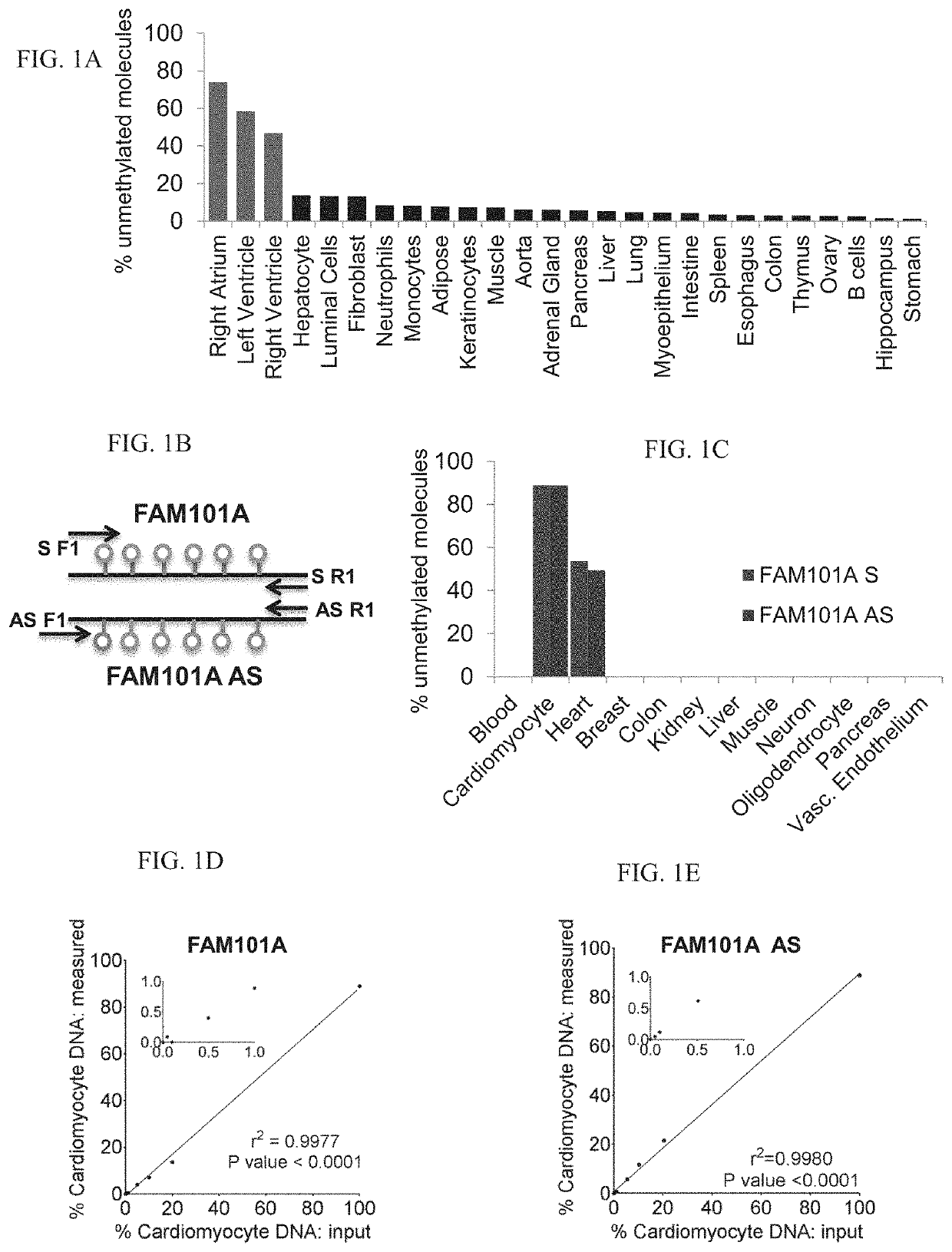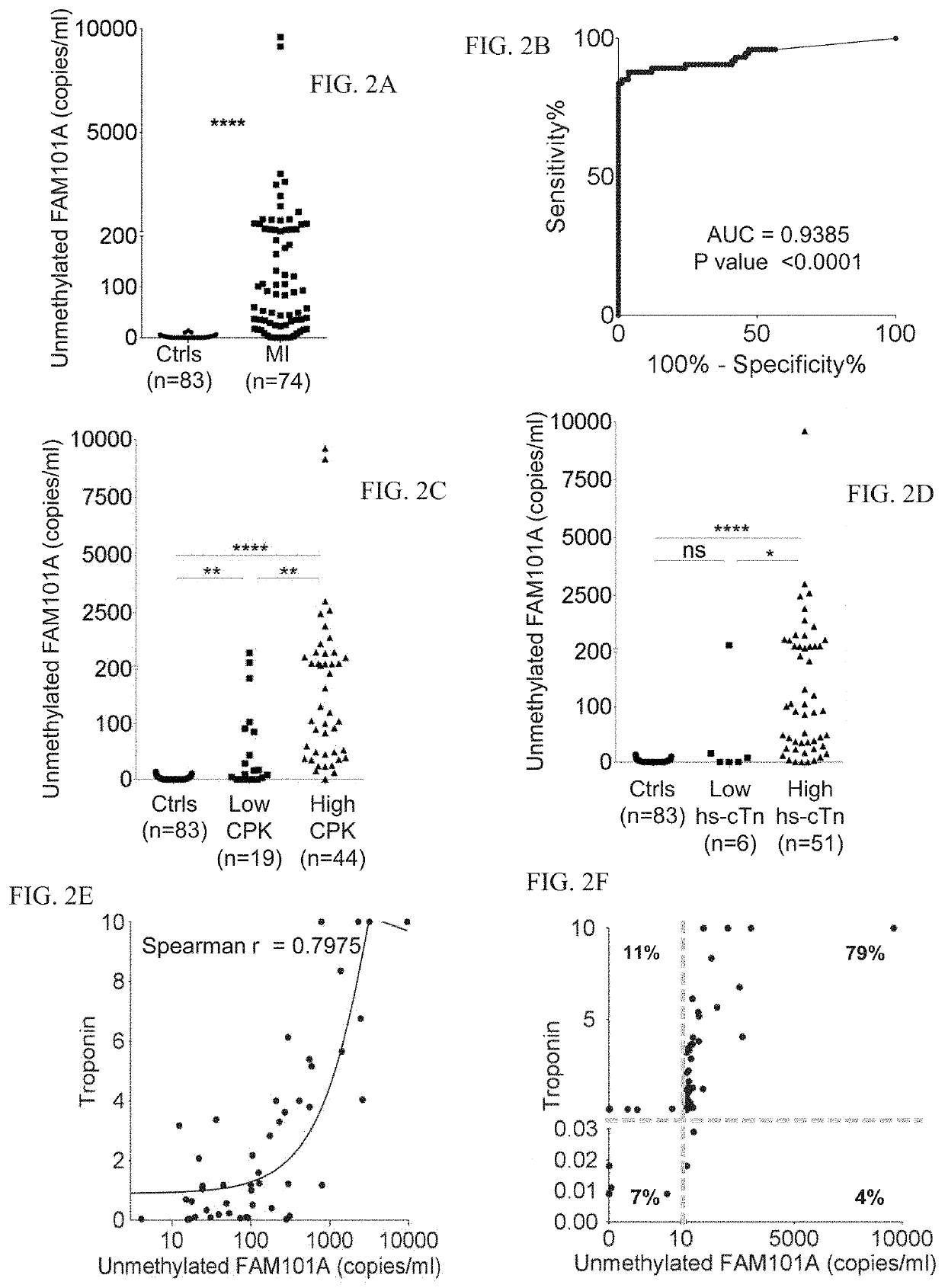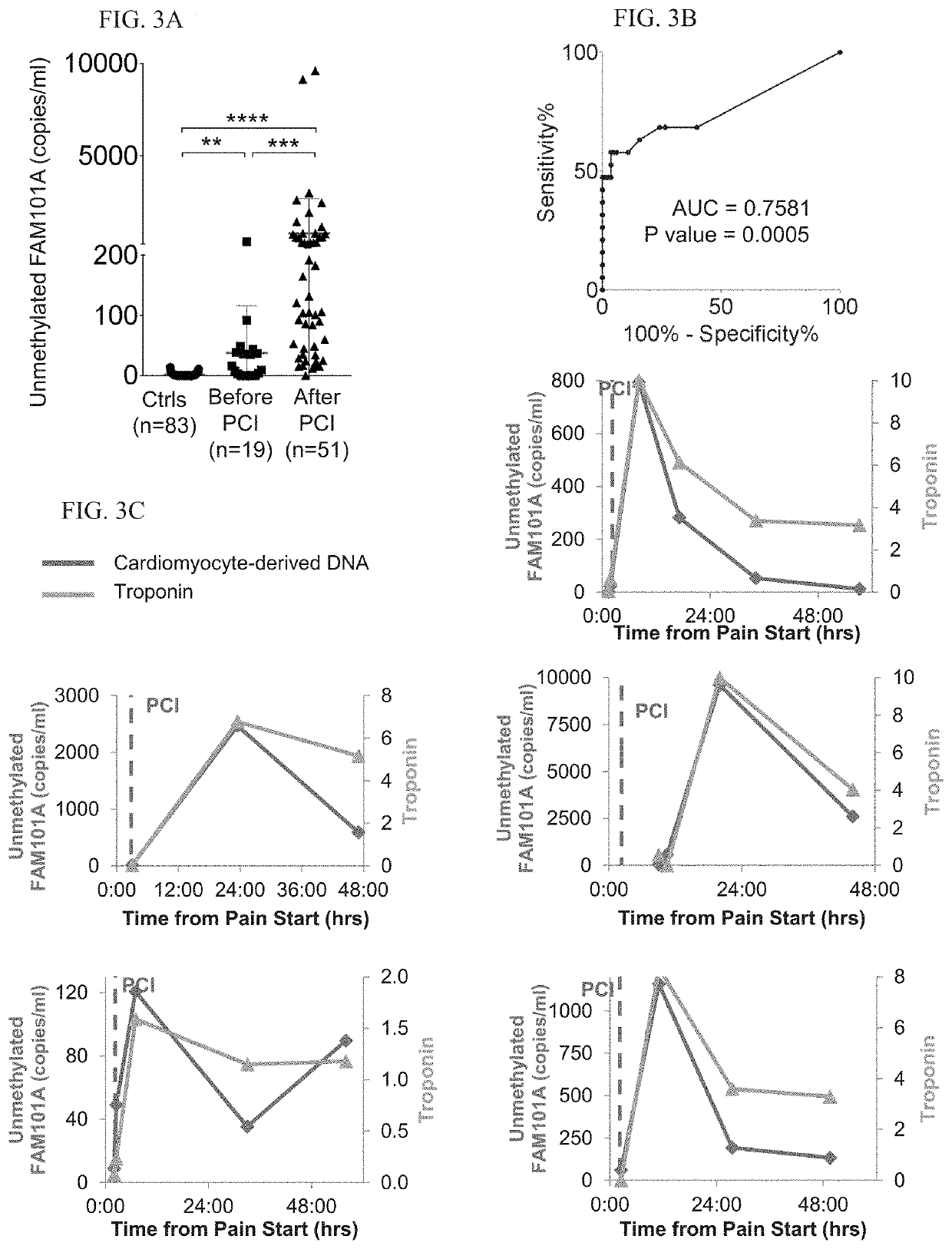DNA targets as tissue-specific methylation markers
- Summary
- Abstract
- Description
- Claims
- Application Information
AI Technical Summary
Benefits of technology
Problems solved by technology
Method used
Image
Examples
example 1
Analyzing Methylation Patterns of Cardiac Markers
[0291]Materials and Methods
[0292]Clinical Samples:
[0293]Cardiac biomarkers used were troponin T and CPK.
[0294]Identification of Cardiac Methylation Markers:
[0295]Tissue-specific DNA methylation markers were selected after a comparison of publically available DNA methylation datasets generated by whole-genome bisulfite sequencing (Roadmap Epigenomics). The fragment of FAM101A used as a cariomyocyte-specific marker is located in chromosome 12, coordinates124692462-124692551.
[0296]Cfdna Analysis:
[0297]Blood samples were collected in EDTA tubes, and centrifuged within 2 hours to separate plasma from peripheral blood cells: first at 1500 g for 10 min, and then at 3000 g for 10 min to remove any remaining cells. Plasma was then stored at −80° C.
[0298]cfDNA was extracted using the QIAsymphony SP instrument and its dedicated QIAsymphony Circulating DNA Kit (Qiagen) according to the manufacturer's instructions. DNA concentration was measured u...
example 2
Analyzing Hepatic Cell Methylation Signatures
[0327]The clinical standard to assess liver damage is serum measurement of alanine aminotransferase (ALT) and aspartate aminotransferase (AST), reflecting hepatocyte injury leading to release of these enzymes into the blood. While in extensive clinical use, these tests do have important limitations. First, the enzymes are not absolutely hepatocyte-specific. AST is expressed in cardiac and skeletal muscle, kidney, brain, pancreas, lung, leukocytes and erythrocytes, while ALT is primarily present in the liver and kidneys, with low amounts in the heart and skeletal muscle. Second, liver enzymes do not always reflect the full burden of disease and in various hepatic pathologies have been shown to be insufficient. A possible reason for this is that the enzymes could be released from dying as well as reversibly injured cells, and therefore do not indicate the exact nature of damage to the liver, nor the number of injured cells. Third, ALT and A...
example 3
List of Additional Identified Targets
[0368]A list of identified targets is provided in Table 1 and 2 herein below. The targets can be used to identify a cell type of the listed organ. It will be appreciated that the sequences provided are 500 base pairs. Preferably the target sequence which is amplified comprises the nucleotides CG which are at position 250 and 251 of each of these sequences and additional nucleotides up and / or down-stream of this site.
TABLE 1SEQ IDOrganNameNO:AcinarCPA12AcinarLMF23AcinarNCLN4AcinarBRF15AcinarFRY6AstrocytesHDAC47AstrocytesAGAP18AstrocytesASTI9AstrocytesPRDM10AstrocytesFOXP411AstrocytesKIAA12AstrocytesPRDM213AstrocytesWWOX14B cellsLRP515B cellsSORL116B cellsTRPV117BETAINSh18BETAMTG119BETAZC3H320BETALeng821BETAFbxw822BETAFbxl1923BloodLoc1 / AGAP224BloodPTPRCAP25BRAINMAD1L126BRAINPTPRN227BRAINWM128BRAINMBP29BRAINNUMBLE30BRAINLRRN331BRAINcg097832BRAINZNF23833BrainWB134BrainUBE4B35BreastKRT1936BreastLMX1B37BreastZNF29638CD8 cellsCD8A39CD8 cellsCD8A anti40C...
PUM
| Property | Measurement | Unit |
|---|---|---|
| Mass | aaaaa | aaaaa |
| Mass | aaaaa | aaaaa |
| Mass | aaaaa | aaaaa |
Abstract
Description
Claims
Application Information
 Login to View More
Login to View More - R&D Engineer
- R&D Manager
- IP Professional
- Industry Leading Data Capabilities
- Powerful AI technology
- Patent DNA Extraction
Browse by: Latest US Patents, China's latest patents, Technical Efficacy Thesaurus, Application Domain, Technology Topic, Popular Technical Reports.
© 2024 PatSnap. All rights reserved.Legal|Privacy policy|Modern Slavery Act Transparency Statement|Sitemap|About US| Contact US: help@patsnap.com










